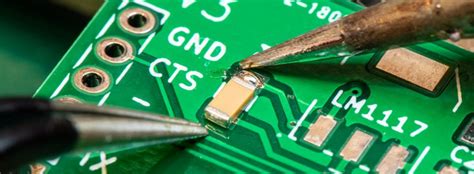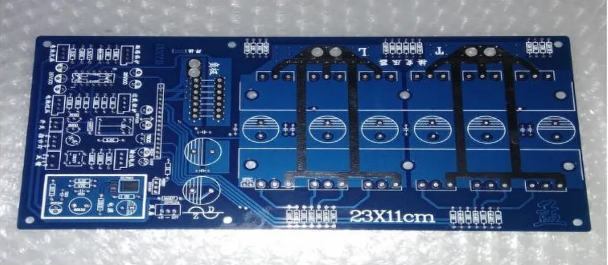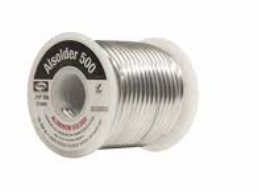Share the experience of making PCB board from PCB copy board design schematic diagram
Usually, the technical requirements for making PCB board from copy board or schematic diagram are not high. It is very simple to make PCB board quickly, but in actual operation, the goal needs to be clarified first. Of course, the focus is still to understand the requirements of layout and wiring for the functions of the components used. Reasonable layout of components and wiring of PCB board can definitely make a high-quality PCB board.
PCB (Printed Circuit Board), Chinese name is printed circuit board, also known as printed circuit board, printed circuit board, is an important electronic component, a support for electronic components, and a provider of electrical connections for electronic components. Because it is made by electronic printing, it is called “printed” circuit board. PCB copy board, that is, on the premise of having physical electronic products and physical circuit boards, reverse R&D technology is used to reversely analyze the circuit board, and restore the original product’s PCB file, bill of materials (BOM) file, schematic file and other technical files and PCB silk screen production files 1:1, and then use these technical files and production files to make PCB board, solder components, fly probe test, and debug circuit boards to complete the complete replication of the original circuit board sample.
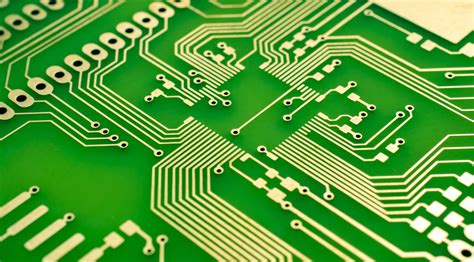
PCB copying is often referred to as circuit board copying, circuit board cloning, circuit board replication, PCB cloning, PCB reverse design or PCB reverse R&D in the industry.
There are many definitions of PCB copying in the industry and academia, but none of them are complete. If we want to give an accurate definition of PCB copying, we can refer to the statement of the authoritative PCB copying laboratory in China: PCB copying means that on the premise that there are physical electronic products and physical circuit boards, reverse R&D technical means are used to reversely analyze the circuit board, and the PCB files, bill of materials (BOM) files, schematic files and other technical files of the original product and PCB silk screen production files are restored 1:1, and then these technical files and production files are used for PCB board making, component welding, flying probe testing, circuit board debugging, and complete replication of the original circuit board sample. Since electronic products are composed of various circuit boards to form the core control part to work, the process of PCB copying can complete the extraction of a full set of technical information of any electronic product and the imitation and cloning of the product.
Many people have misunderstandings about the concept of PCB copying.
In fact, with the continuous development and deepening of the copying industry, today’s PCB copying concept has been extended to a wider range, no longer limited to simple circuit board copying and cloning, but also involving secondary development of products and research and development of new products. For example, through the analysis of existing product technical documents, understanding and discussion of design ideas, structural characteristics, process technology, etc., it can provide feasibility analysis and competitive reference for the research and development of new products, assist research and development design units to keep up with the latest technology development trends, timely adjust and improve product design plans, and develop the most competitive new products in the market. At the same time, the process of PCB copying can achieve rapid updates and upgrades and secondary development of various types of electronic products through the extraction and partial modification of technical data files.
According to the file diagrams and schematic diagrams extracted by copying, professional designers can also optimize the design and modify the PCB according to the wishes of customers, and can also add new functions to the products or redesign the functional features on this basis. In this way, products with new functions will appear at the fastest speed and in a brand-new posture, not only with their own intellectual property rights, but also gain opportunities in the market, bringing double benefits to customers.
PCB copying is to clone and export schematics of existing PCB circuit boards. It is a file used for production.
On this basis, secondary development and redesign can be carried out according to user needs to achieve product function upgrades and expansions. So how to turn the schematic diagram of PCB copying file into a real PCB board?
Maybe everyone knows that making a PCB board is to turn the designed/cloned schematic diagram into a real PCB circuit board.
Please don’t underestimate this process. There are many things that work in principle but are difficult to achieve in engineering, or things that others can achieve but others cannot achieve. Therefore, it is not difficult to make a PCB board, but it is not an easy thing to make a good PCB board.
The two major difficulties in the field of microelectronics are the processing of high-frequency signals and weak signals. In this regard, the level of PCB production is particularly important. The same schematic diagram, the same components, and the PCBs made by different people have different results. So how can a good PCB board be made? Based on our previous experience, I would like to talk about my views on the following aspects:
1.Clear goals
When accepting a design/copying task, you must first clarify its goals. Whether it is an ordinary PCB board, a high-frequency PCB board, a small signal processing PCB board, or a PCB board with both high frequency and small signal processing, if you only need to design an ordinary PCB board, as long as the layout and wiring are reasonable and neat, and the mechanical dimensions are accurate, if there are medium-load lines and long lines, certain means must be used to deal with them to reduce the load, and the long lines must be driven more strongly, with the focus on preventing long line reflections. When there are signal lines exceeding 40MHz on the board, these signal lines must be given special consideration, such as problems such as crosstalk between lines. If the frequency is higher, there are stricter restrictions on the length of the wiring. According to the network theory of distributed parameters, the interaction between the high-speed circuit and its connection is a decisive factor and cannot be ignored during system design. With the increase in gate transmission speed, the opposition on the signal line will increase accordingly, and the crosstalk between adjacent signal lines will increase proportionally. Usually, the power consumption and heat dissipation of high-speed circuits are also very large, so sufficient attention should be paid when making high-speed PCBs.
When there are weak signals at the millivolt or even microvolt level on the board, special attention should be paid to these signal lines. Small signals are very susceptible to interference from other strong signals because they are too weak. Shielding measures are often necessary, otherwise the signal-to-noise ratio will be greatly reduced. As a result, the useful signal is drowned by noise and cannot be effectively extracted.
The commissioning of the board should also be considered in the design stage. The physical location of the test point and the isolation of the test point should not be ignored, because some small signals and high-frequency signals cannot be directly measured by adding probes.
In addition, other related factors should be considered, such as the number of board layers, the package shape of the components used, and the mechanical strength of the board. Before making a PCB board, you should have a clear idea of the design goals of the design.
2.Understand the requirements of the layout and wiring for the functions of the components used
We know that some special components have special requirements for layout and wiring, such as the analog signal amplifiers used by LOTI and APH. The analog signal amplifiers require a stable power supply with small ripple. The analog small signal part should be kept as far away from the power device as possible. On the OTI board, the small signal amplifier part is specially equipped with a shielding cover to shield the stray electromagnetic interference. The GLINK chip used on the NTOI board adopts the ECL process, which consumes a lot of power and generates a lot of heat. The heat dissipation problem must be specially considered during the layout. If natural heat dissipation is used, the GLINK chip should be placed in a place where the air circulation is relatively smooth, and the heat dissipated should not have a big impact on other chips. If the board is equipped with a speaker or other high-power devices, it may cause serious pollution to the power supply. This should also be given enough attention.
3.Consideration of component layout
The first factor to be considered in the layout of components is electrical performance. Components with close connection relationships should be placed together as much as possible, especially for some high-speed lines. When laying out, they should be as short as possible, and power signals and small signal devices should be separated. On the premise of meeting the circuit performance, the components should be placed neatly, beautifully, and easy to test. The mechanical size of the board and the location of the socket should also be carefully considered.
The grounding and transmission delay time on the interconnection line in the high-speed system are also the first factors to be considered when designing the system.
The transmission time on the signal line has a great influence on the overall system speed, especially for high-speed ECL circuits. Although the integrated circuit itself is very fast, the increase in delay time caused by the use of ordinary interconnection lines on the baseboard (about 2ns delay per 30cm line length) can greatly reduce the system speed. Synchronous working components such as shift registers and synchronous counters are best placed on the same plug-in board, because the transmission delay time of clock signals to different plug-in boards is not equal, which may cause shift register errors. If they cannot be placed on the same board, the length of the clock line connected from the common clock source to each plug-in board must be equal where synchronization is critical.
4.Considerations for wiring
With the completion of the design of OTNI and star fiber optic networks, there will be more boards with high-speed signal lines above 100MHz that need to be designed in the future. Here we will introduce some basic concepts of high-speed lines.
5.Transmission line
Any “long” signal path on a printed circuit board can be regarded as a transmission line. If the transmission delay time of the line is much shorter than the signal rise time, the reflections generated during the signal rise will be submerged. No more overshoot, kickback and ringing. For most current MOS circuits, the ratio of the rise time to the line transmission delay time is much larger, so the line can be measured in meters without signal distortion. For faster logic circuits, especially ultra-high-speed ECL integrated circuits, due to the increase in edge speed, if no other measures are taken, the length of the line must be greatly shortened to maintain signal integrity. There are two ways to make high-speed circuits work on relatively long lines without serious waveform distortion.
TTL uses Schottky diode clamping for fast falling edges, so that the overshoot is clamped at a level one diode drop lower than the ground potential, which reduces the subsequent kickback amplitude. Slower rising edges allow overshoot, but it is attenuated by the relatively high output impedance (50~80Ω) of the circuit in the “H” state. In addition, due to the greater immunity to interference in the “H” state, the kickback problem is not very prominent. For HCT series devices, if Schottky diode clamping and series resistor termination methods are combined, the improvement effect will be more obvious.
When there is fan-out along the signal line, at higher bit rates and faster edge rates, the TTL shaping method introduced above is somewhat insufficient.
Because there are reflected waves in the line, they will tend to be synthesized at high bit rates, causing serious signal distortion and reduced anti-interference ability. Therefore, in order to solve the reflection problem, another method is usually used in the ECL system: line impedance matching. This method can control reflections and ensure signal integrity.
Strictly speaking, transmission lines are not very necessary for conventional TTL and CMOS devices with slower edge speeds. Transmission lines are not always necessary for high-speed ECL devices with faster edge speeds. However, when transmission lines are used, they have the advantages of predicting connection delays and controlling reflections and oscillations through impedance matching. 1
The following are the five basic factors that determine whether to use transmission lines.
They are:
(1) the edge rate of the system signal,
(2) the connection distance
(3) the capacitive load (the amount of fan-out),
(4) the resistive load (the termination method of the line);
(5) the allowable backlash and overshoot percentage (the degree of reduction in AC interference immunity).

2.Several types of transmission lines
(1) Coaxial cable and twisted pair: They are often used to connect between systems. The characteristic impedance of coaxial cable is usually 50Ω and 75Ω, and the twisted pair is usually 110Ω.
(2) Microstrip line on printed circuit board
Microstrip line is a strip conductor (signal line). It is separated from the ground plane by a dielectric. If the thickness, width and distance of the line from the ground plane are controllable, its characteristic impedance can also be controlled.
(3) Stripline in printed circuit board
Stripline is a copper strip line placed in the middle of a dielectric between two conductive planes. If the thickness and width of the line, the dielectric constant of the medium, and the distance between the two conductive planes are controllable, then the characteristic impedance of the line is also controllable.
Similarly, the transmission delay time of a stripline per unit length is independent of the width or spacing of the line; it depends only on the relative dielectric constant of the medium used.
3.Terminating the transmission line
When a line is terminated at the receiving end with a resistor equal to the characteristic impedance of the line, the transmission line is called a parallel terminated line. It is mainly used to obtain the best electrical performance, including driving distributed loads.
Sometimes, in order to save power consumption, a 104 capacitor is connected in series to the terminated resistor to form an AC termination circuit, which can effectively reduce DC losses.
A resistor is connected in series between the driver and the transmission line, and the end of the line is no longer connected to the termination resistor. This termination method is called series termination. Overshoot and ringing on longer lines can be controlled by series damping or series termination technology. Series damping is achieved by using a small resistor (usually 10~75Ω) in series with the output end of the driver gate. This damping method is suitable for use with lines whose characteristic impedance is controlled (such as bottom board wiring, circuit boards without ground planes, and most wire wraps.
When series termination is used, the sum of the value of the series resistor and the output impedance of the circuit (driver gate) is equal to the characteristic impedance of the transmission line. Series termination wiring has the disadvantages of only being able to use lumped loads at the terminal and having a long transmission delay time. However, this can be overcome by using redundant series termination transmission lines.

4.Non-terminated transmission line
If the line delay time is much shorter than the signal rise time, the transmission line can be used without series termination or parallel termination. If the round-trip delay (the time it takes for the signal to go back and forth once on the transmission line) of a non-terminated line is shorter than the rise time of the pulse signal, then the kickback caused by non-termination is about 15% of the logic swing. The maximum open line length is approximately:
Where: tr is the rise time
tpd is the transmission delay time per unit line length
5.Comparison of several termination methods
Both parallel termination and series termination have their own advantages. Which one to use, or both, depends on the designer’s preference and system requirements. The main advantages of parallel termination are fast system speed and complete signal transmission on the line without distortion. The load on the long line will neither affect the transmission delay time of the drive gate driving the long line nor its signal edge speed, but will increase the transmission delay time of the signal along the long line. When driving a large fan-out, the load can be distributed along the line through branch short lines, instead of having to lump the load at the end of the line as in the series termination.
The series termination method enables the circuit to drive several parallel load lines. The delay time increment caused by the capacitive load of the series termination is about twice that of the corresponding parallel termination, while the short line slows down the edge speed and increases the delay time of the drive gate due to the capacitive load. However, the crosstalk of the series termination is smaller than that of the parallel termination. The main reason is that the signal amplitude transmitted along the series termination is only half of the logic swing, so the switching current is only half of the switching current of the parallel termination, and the signal energy is small, so the crosstalk is also small.

5.PCB board layout
Line technology
Whether to use a double-sided board or a multi-layer board when making a PCB depends on the maximum operating frequency, the complexity of the circuit system, and the requirements for assembly density. When the clock frequency exceeds 200MHZ, it is best to use a multi-layer board. If the operating frequency exceeds 350MHz, it is best to use a printed circuit board with polytetrafluoroethylene as the dielectric layer, because its high-frequency attenuation is smaller, the parasitic capacitance is smaller, the transmission speed is faster, and it saves power due to the larger Z0. The following principles are required for the routing of printed circuit boards
(1) All parallel signal lines should be spaced as far as possible to reduce crosstalk. If there are two signal lines that are close to each other, it is best to run a ground wire between the two lines, which can play a shielding role.
(2) When designing signal transmission lines, avoid sharp turns to prevent sudden changes in the characteristic impedance of the transmission line and reflection. Try to design it into a uniform arc line with a certain size.
The width of the printed circuit board can be calculated according to the above-mentioned formula for calculating the characteristic impedance of the microstrip line and the stripline. The characteristic impedance of the microstrip line on the printed circuit board is generally between 50 and 120Ω. In order to obtain a large characteristic impedance, the line width must be very narrow. But very thin lines are not easy to make. Considering various factors, it is generally more appropriate to choose an impedance value of about 68Ω, because choosing a characteristic impedance of 68Ω can achieve the best balance between delay time and power consumption.
A 50Ω transmission line will consume more power; a larger impedance can certainly reduce power consumption, but it will increase the transmission delay time. Negative line capacitance will cause an increase in transmission delay time and a decrease in characteristic impedance. However, the intrinsic capacitance per unit length of a line segment with very low characteristic impedance is relatively large, so the transmission delay time and characteristic impedance are less affected by load capacitance. An important feature of a transmission line with proper termination is that the branch short line should have little effect on the line delay time. When Z0 is 50Ω. The length of the branch short line must be limited to within 2.5cm. To avoid large ringing.
(4) For double-sided boards (or four-layer wiring in a six-layer board), the wiring on both sides of the circuit board should be perpendicular to each other to prevent mutual induction and crosstalk.
(5) If the printed circuit board is equipped with high-current devices, such as relays, indicator lights, speakers, etc., their ground wires should be separated and routed separately to reduce noise on the ground wires. The ground wires of these high-current devices should be connected to an independent ground bus on the plug-in board and the backplane, and these independent ground wires should also be connected to the ground point of the entire system.
(6) If there is a small signal amplifier on the board, the weak signal line before amplification should be kept away from the strong signal line, and the wiring should be as short as possible. If possible, it should be shielded with a ground wire.
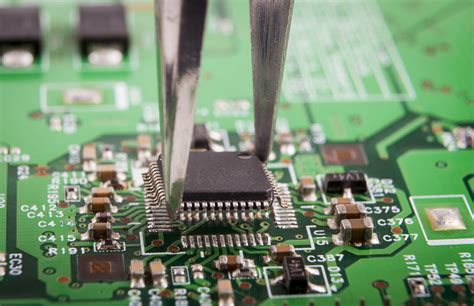
The following is the PCB copying process:
The first step is to get a PCB. First, record the model, parameters, and position of all components on paper, especially the direction of the diode, the three-tube, and the direction of the IC notch.
The second step is to remove all components and remove the tin in the PAD hole. Clean the PCB with alcohol, then put it into the scanner, start PHOTOSHOP, scan the silk screen surface in color, and print it out for later use.
Step 3: Use water gauze paper to lightly polish the TOP LAYER and BOTTOM LAYER until the copper film is shiny, put it into the scanner, start PHOTOSHOP, and scan the two layers in color.
Step 4: Adjust the contrast and brightness of the canvas to make the part with copper film and the part without copper film have a strong contrast, then convert the image to black and white, check whether the lines are clear, if not, repeat this step. If clear, save the image as black and white BMP format files TOP.BMP and BOT.BMP.
Step 5: Convert the two BMP format files to PROTEL format files respectively, and import the two layers in PROTEL. If the positions of the PAD and VIA of the two layers are basically overlapped, it means that the previous steps are done well. If there is a deviation, repeat the third step.
Sixth, convert TOP. BMP to TOP. PCB, and place the components according to the drawing in step 2.
Step 7: Convert BOT. BMP to BOT. PCB.
Step 8: Import TOP. PCB and BOT. PCB into PROTEL and combine them into one drawing.
Step 9: Use a laser printer to print TOP LAYER and BOTTOM LAYER on transparent film (1:1 ratio), put the film on that PCB, and compare whether there is any error.

